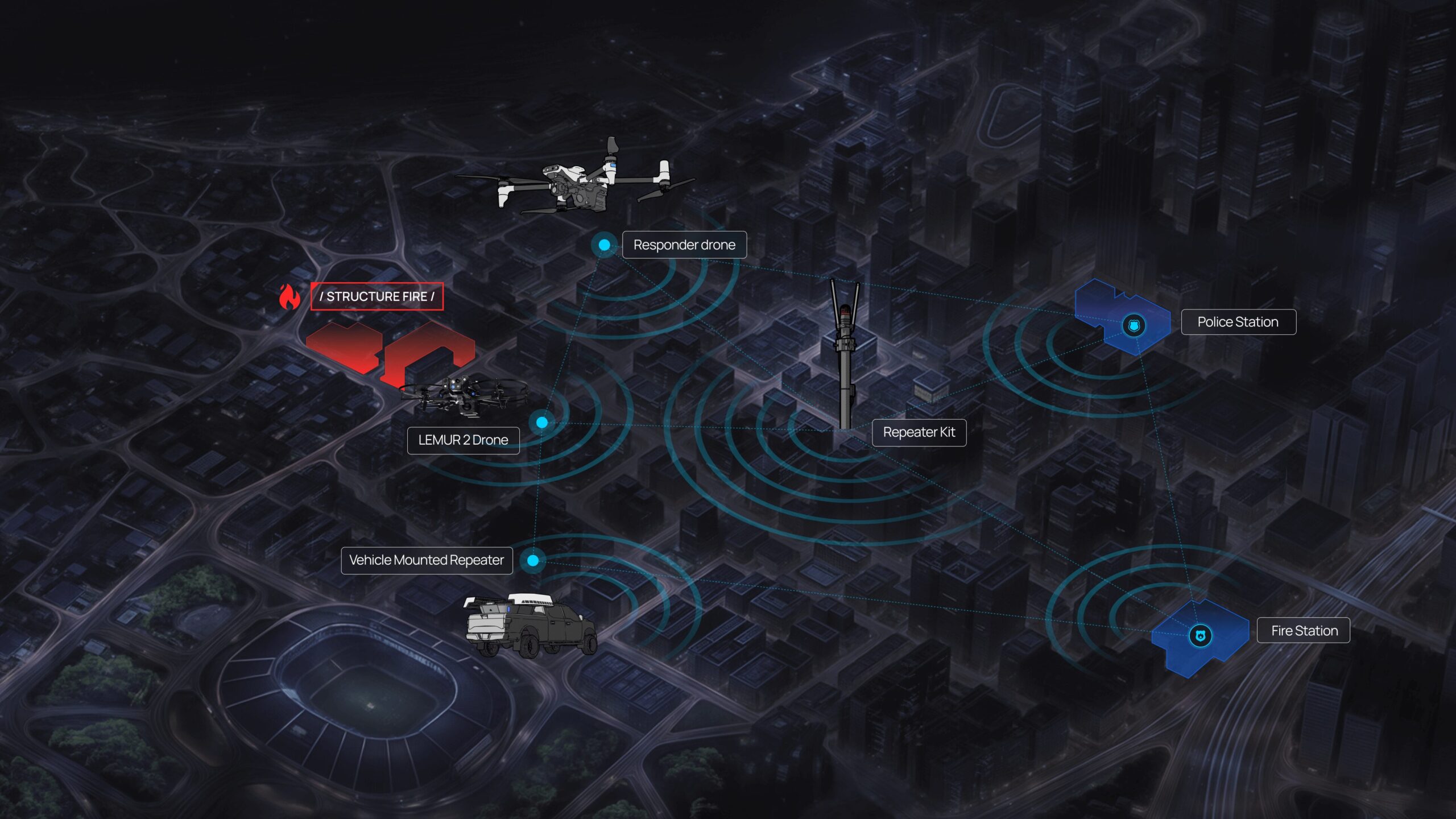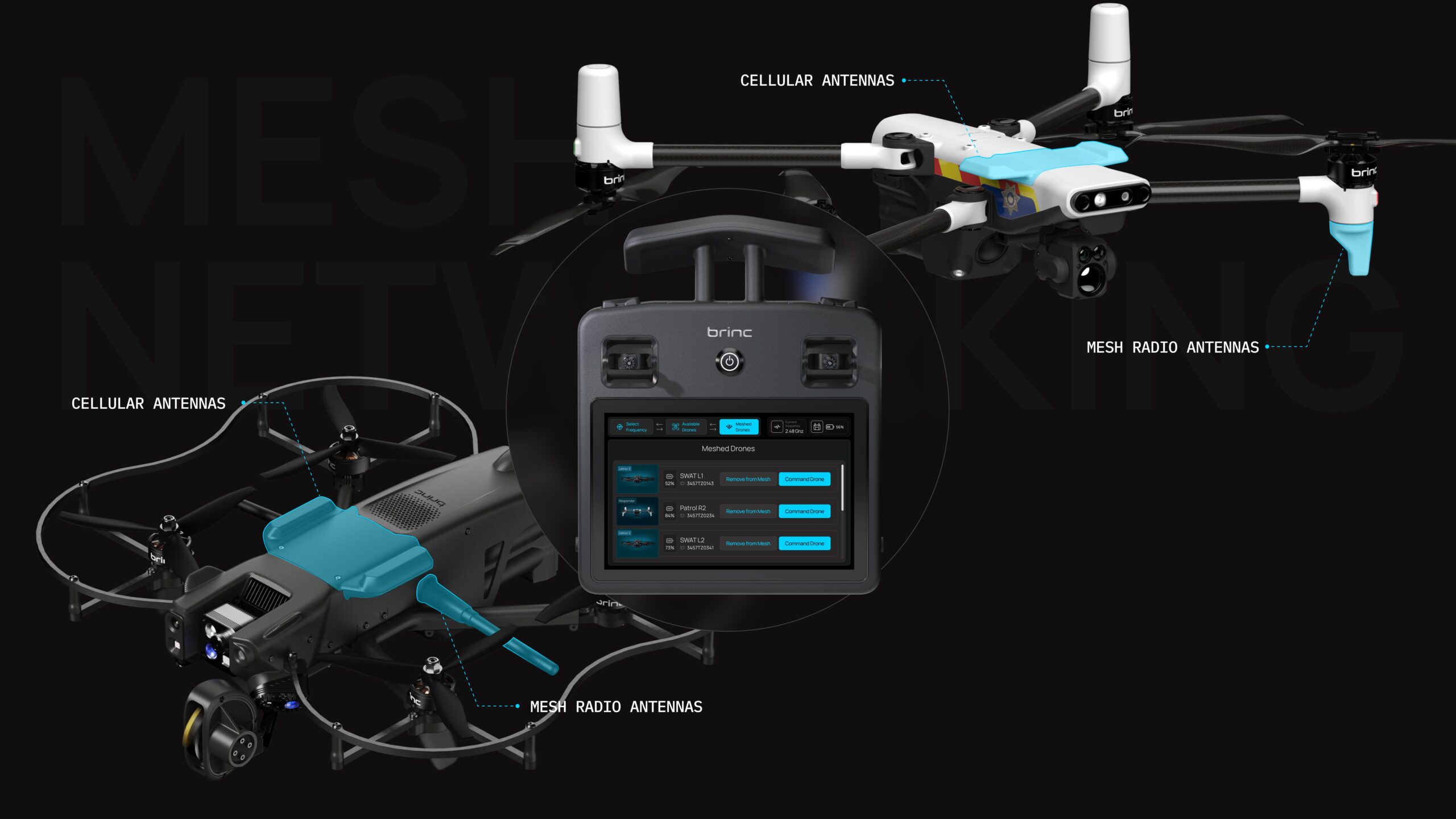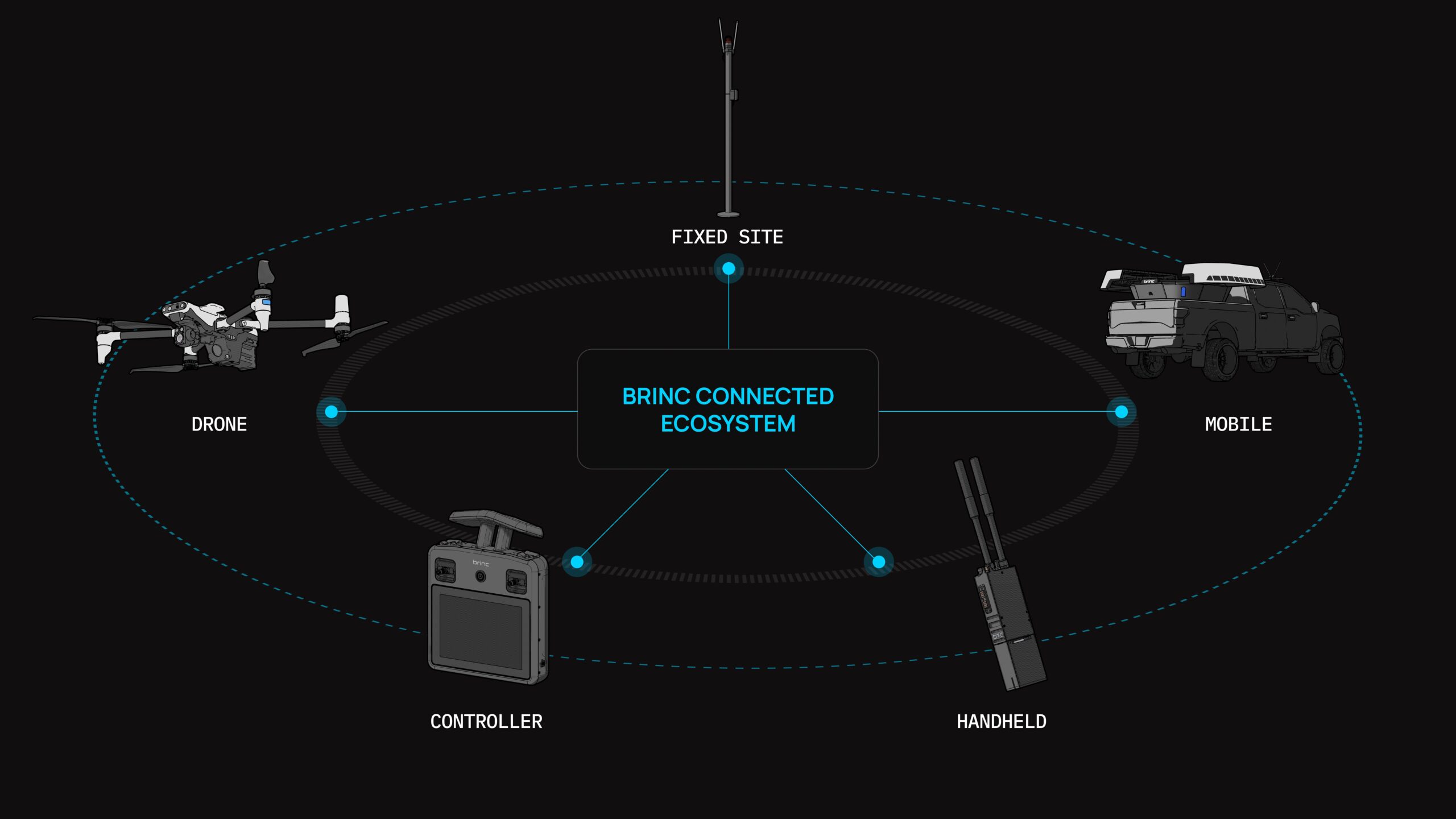Redundant Communications Creates Flexible Drone Operations

Don’t let spotty cell service doom your drones
Relying on cell service for your agency’s drone operations is just fine and dandy – until there’s unreliable cell service. And there are many parts of America, both rural and near major metropolitan areas, where cell service is spotty at best.
No problem, just rely on radios. But depending on radio connectivity for drone operations poses its own challenges, as signals tend to drop near large structures and you’re tied to remote controllers.
So how can emergency responders fly a drone without reliable reception?
Pair cell and radio systems together with the BRINC Connect blended communication system to get the benefits of each while adding redundancy and flexibility.
Not only can agencies enhance operational uptime but you can also customize communication and streamline emergency response by ensuring seamless integration of all systems – BRINC Pilot, LEMUR 2 drone, Responder drone, and BRINC LiveOps software platform.

Industry-Leading Tech to the Rescue
The system revolves around cutting-edge meshing radio technology to increase spectral efficiency and deliver a robust, reliable communication link to BRINC Connect.
By embedding this innovative radio technology into the BRINC Pilot controller and all our drones, we offer a seamless communication framework across platforms.

“With the integration of state-of-the-art radio systems and our fusion of radio and 4G LTE modems, BRINC Connect brings an unmatched level of communication and interoperability to the industry,” said BRINC founder and CEO Blake Resnick. “This system empowers first responders to access real-time data, operate our drones from greater distances, and communicate effectively during critical incidents.”
Drone to Drone Comms
One of the main advantages of meshed communications is that information passes not only from controller to drone, but also from drone to drone, extending operational range. Which means communications become more reliable and performative as you deploy more BRINC technology on-scene.
This drone-to-drone communication becomes invaluable for indoor drone operations, where concrete buildings can quickly block out both radio and 4G LTE signals. According to Will Huddler, BRINC VP of Customer Success and Training and former SWAT Commander for the Las Vegas Metro PD, “customers encountering a challenging radiofrequency environment while clearing a building, send the first drone just inside and perch it, starting the mesh network and covering a critical area. Then they’ll deploy a second Lemur 2 to enter further into the structure.”
This meshed communication becomes even more beneficial when combining the capabilities of an interior drone like the BRINC Lemur and an outdoor drone such as the BRINC Responder. Whereas it can be hard for signals to penetrate thick concrete walls of a (school) building, an interior drone can easily mesh with a drone overhead.

Handheld. Fixed. Mobile.
For agencies with diverse needs and geographic challenges, BRINC Connect can include custom repeater kits that leverage software-defined radios so you can customize frequency ranges based on your jurisdiction’s needs.
For SWAT and manual deployments, our tactical repeater kit can strap to an officer’s vest or be placed wherever it’s needed.
For agencies with a lot of ground to cover, vehicle-mounted repeater kits allow you to scale out your connectivity across the whole jurisdiction.
And finally, the fixed-site kit allows you to solve known radio interference problems and boost capacity.
If your agency would like to learn more about upgrading your drone fleet, contact us here.

